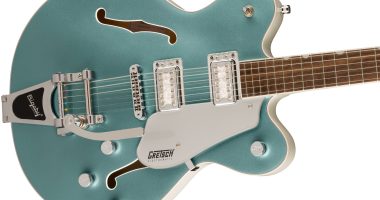
Opinions expressed by Entrepreneur contributors are their own.
A great deal of attention has been paid to improving the customer experience to grow your company. While the customer experience is critical, a related area deserves more attention: the customer’s desired outcome. The terms “customer experience,” “customer outcome,” and “customer success” are often used interchangeably.
However, each of these terms is distinctly different and represents a stage in your customer’s journey. Of the three, the customer outcome can impact your company’s success most. The customer outcome determines whether customers feel successful after using your product or service. Notice that I didn’t say “are successful.” They can achieve the outcome they want without “feeling” successful.
It’s the difference between a required outcome and a desired outcome.
Required vs. Desired Outcomes
The customer outcome is the goal your customer wants to achieve. Whatever it is, they can’t reach it on their own; they need help. Helping them achieve their goal is why they’re using your product or service.
The required outcome is what they want to achieve — the bare minimum. For example, they want to rent a car. If they make a reservation with your rental business and you have a car waiting for them when they arrive, you’ve met their required outcome.
But do they feel successful? That depends on whether you’ve met their required outcome in the way they expected you to. That’s the desired outcome.
If they’re traveling for pleasure, they may want a minivan to seat their entire family and luggage. They may want a luxury sedan to impress a client if they’re traveling for business. The family vacationer and the business traveler have the same required outcome — renting a vehicle — but different desired outcomes.
If, for example, they end up with each other’s vehicles, you’ve met their required outcomes but not their desired outcomes. The sedan isn’t going to fit a family plus their luggage comfortably, and the minivan isn’t going to impress the client.
In a nutshell, the required outcome is what the customer wants to achieve. In the above example, it’s traveling from one point to another.
The desired outcome is the required outcome plus the appropriate customer experience. In the example, it’s delivering the right vehicle for the family and the business traveler to make the experience seamless.
Related: 9 Hidden Reasons Your Customers Will Leave You
Know your ideal customer
In order to deliver the desired outcome, you need to learn everything you can about your ideal customer.
Your ideal customer is more than just someone who might buy your product or service. An ideal customer has problems you can effectively solve. They understand your value proposition. They’re not only willing to pay for your product but also purchase it frequently enough to have a high lifetime value while needing little in the way of customer support.
Your ideal customer also aligns with your brand image and values. They appreciate what your business stands for and become loyal advocates.
To attract these valuable consumers, you need to know their demographics—age, gender, income, location, and similar data. You also need to know how they shop, what media they consume, their purchasing habits and so on. Learning about their interests, values and personality traits completes the picture.
Tailor the customer experience
The more you know about your ideal customer, the more you’ll be able to improve the customer experience — every touchpoint, interaction, engagement — and ultimately make them feel successful when they finally use your product.
The customer experience is the perception a customer forms based on all touchpoints, interactions and engagements they have with your company, your brand and your product.
Touchpoints are single moments when a customer is exposed to your company’s brand, product, employees, or messaging. Every billboard, banner ad and TV commercial they see is a touchpoint. Touchpoints set an expectation of the customer experience, communicating what it’s like to do business with you.
Related: How Customer Success Can Supercharge Your Revenue
Interactions are two-way communications between a potential customer and your business. When someone replies to a post your company makes on social media, that’s an interaction. When they talk to your chatbot or customer service representative, that’s an interaction. Visting your website or sharing a blog post you wrote is an interaction. Each interaction gives customers more information about the quality they can expect from your product or service.
Engagements involve some level of commitment from the customer. They make an initial purchase or subscribe to your service. They make a reservation to rent a vehicle from your fleet. They sign up for a free trial. They liked your touchpoints and interactions enough to commit to doing business with you.
All of the touchpoints, interactions and engagements customers have with your business are part of the customer experience. In a way, it’s a promise to the customer of how you’ll treat them if they do business with you.
Your company delivers on that promise when a customer achieves their desired outcome.
Related: 12 Golden Rules for Customer Experience Strategy
Go the extra mile
Hyperfocusing on the customer’s desired outcome often means understanding their definition of success better than they understand it themselves.
Let’s return to the example of the family renting a minivan. The parents’ desired outcome is a reliable vehicle large enough to comfortably accommodate themselves, their kids and all their luggage. If that’s what’s waiting for them when they arrive, they’ll feel successful.
But when you understand what it’s like to take a road trip with children, you can improve on that feeling of success. Your company might include a book of travel games the family can enjoy together, for example, or a booklet of fun day trips within driving distance — something extra that the customer didn’t expect but adds to their experience.
When you provide a customer experience and desired outcome that exceeds their expectations, you haven’t just created a customer; you’ve created an advocate for your brand. They’ll leave rave reviews, tell their friends and colleagues about you, and keep giving you their business for as long as you continue wowing them.
This article is from Entrepreneur.com









